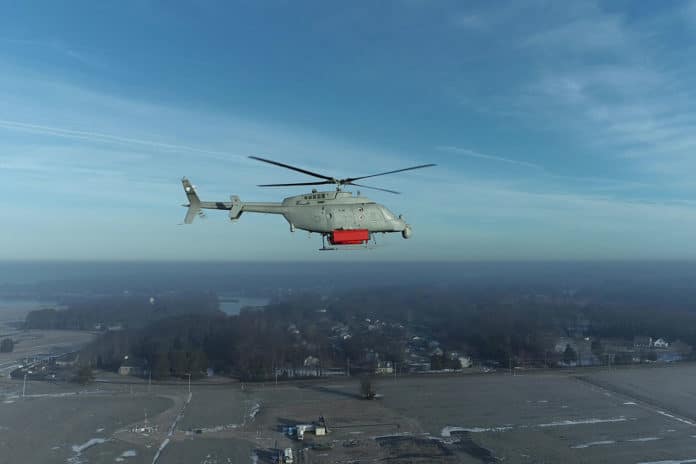The U.S. Navy is working to develop a new mine countermeasure (MCM) sensor suite for the MQ-8C Fire Scout that will enable the unmanned helicopter to detect and localize mines and obstacles on land and at sea.
Working with a number of U.S. Navy bodies, the Fire Scout program office will integrate the Single System Multi-Mission Airborne Mine Detection (SMAMD) payload onto the platform. The SMAMD will be the first MCM system flown onboard the MQ-8C Fire Scout, as well as the airframe’s heaviest payload carried to date.
Developed by BAE System, the SMAMD system utilizes an airborne optical sensor suite that will have the ability to have real-time onboard processing – coupled with low false alarm rates will enable the warfighter to respond swiftly to detected threats.
“This capability is extremely important as we see future fights occurring in the littoral waters where mine warfare is prevalent,” said Capt. Thomas Lansley, Fire Scout program director. “A mine warfare capability will greatly reduce the risk for LCS and other vessels in the littoral.”
In February, UX-24 conducted Flying Qualities and Performance testing with the MQ-8C using mass equivalency models in place of the prototype system pods, which mimic the size and weight of the SMAMD System. A land-based demonstration of the MCM prototype will be carried out this spring at the Naval Surface Warfare Center in Panama City, Florida. The test will require the drone to fly from over the beach, trying to pinpoint drifting mines and moored mines both in shallow water and deep water up to 10 km (6 miles) offshore. The performance data gathered during the demonstration will inform future integration efforts.
The SMAMD will prove that a podded MCM system can operate as intended on the MQ-8C without causing adverse effects to the UAV or significantly diminishing time on station.
